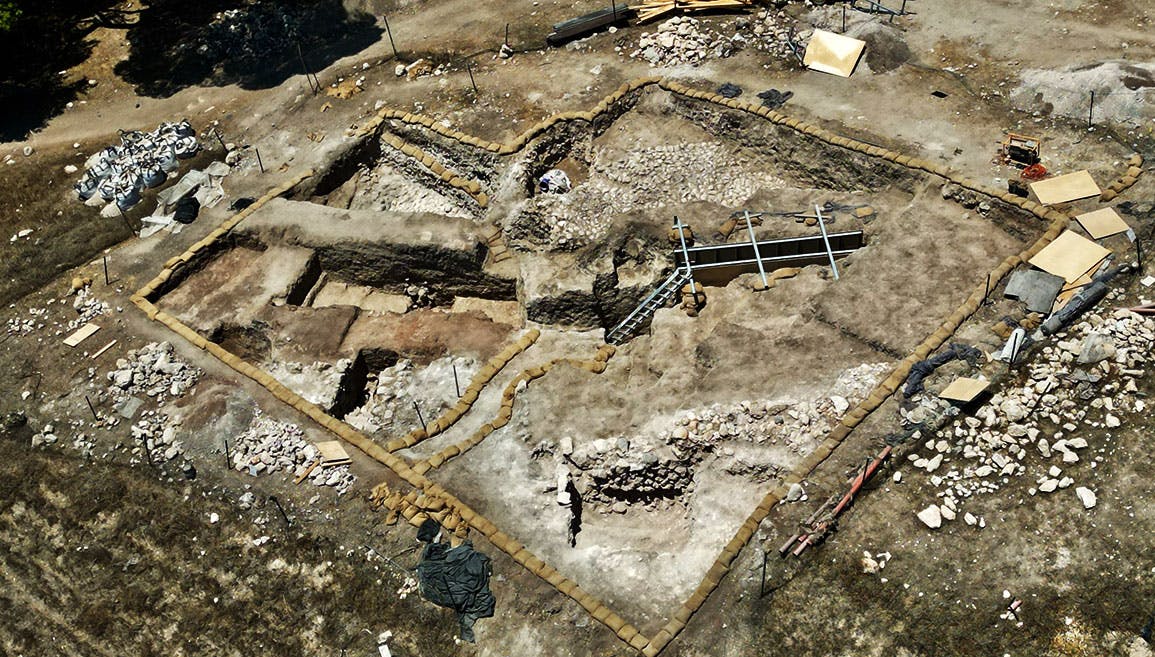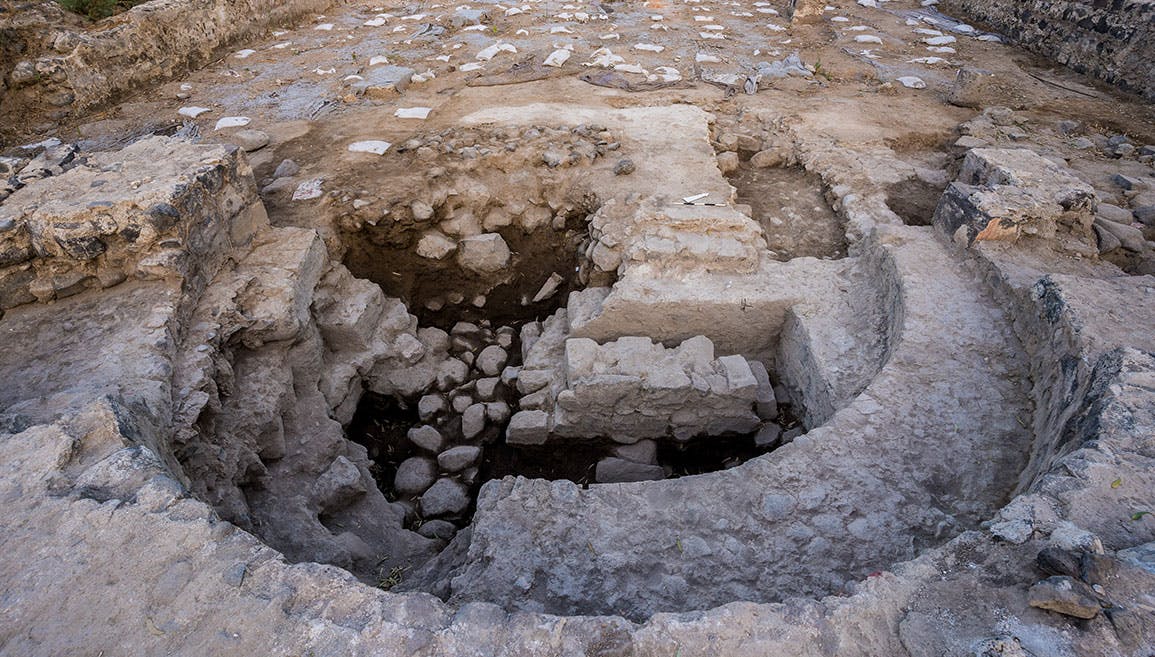The Bible in DC: The National Cathedral
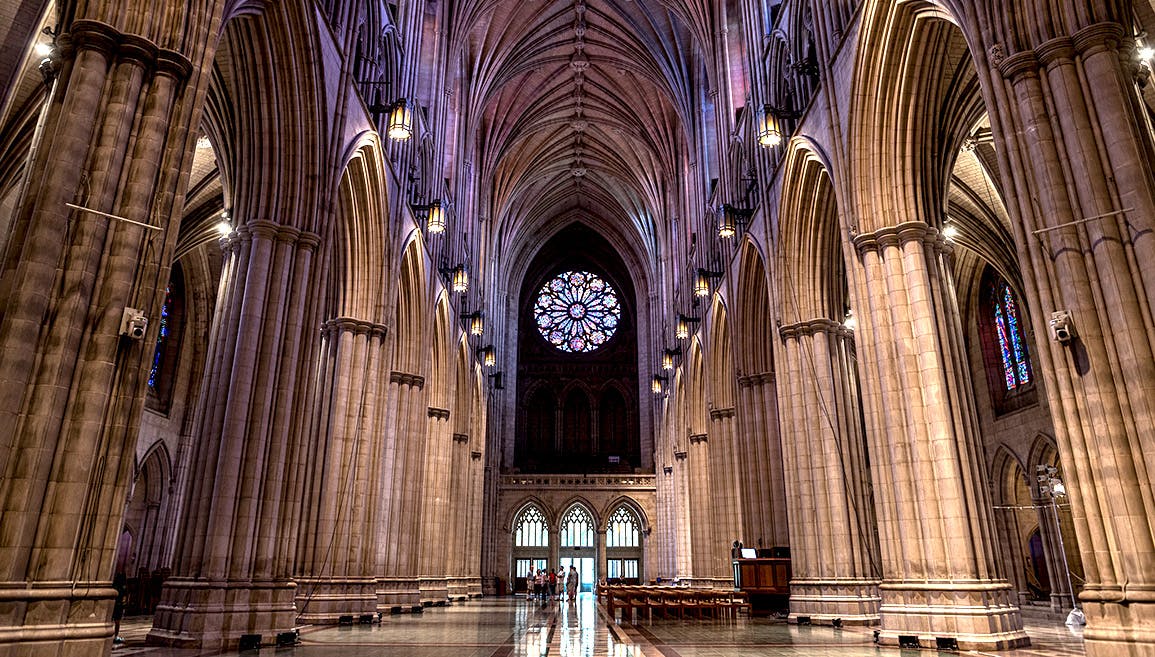
How does a nation whose laws require the separation of church and state have a national cathedral? What is its function? Its purpose? What can it tell us about America and American life, culture, and religion?
Answers to each of these questions and more can be discovered on a visit to the National Cathedral in Washington, DC. The cathedral, a place dedicated to the soul of America, shows the diversity and breadth of American Christianity in an eclectic, but stunning, display of architecture, stained glass, sculptures, and inscriptions.
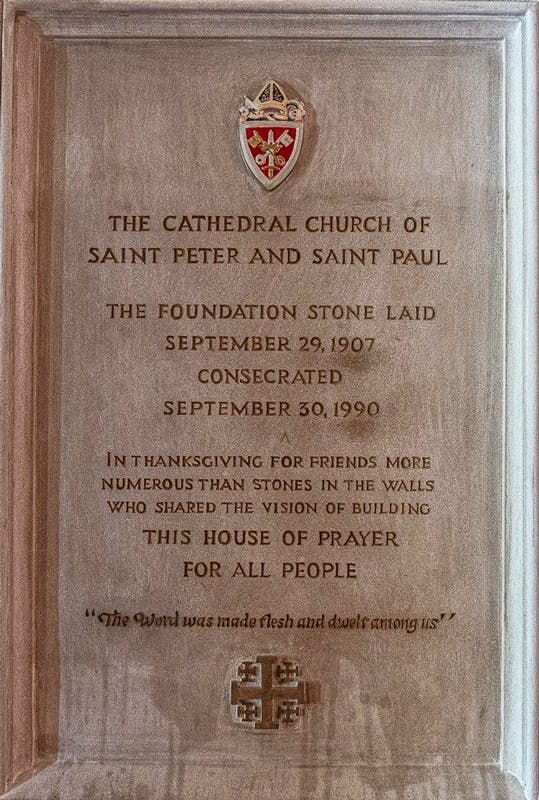
Figure 1: Dedicated to the apostles Peter and Paul, the cathedral seeks to be open to all people as a “house of prayer,” quoting from Isaiah 56:7 and the Gospels.
From the Daughters of the American Revolution to Darth Vader, the cathedral brings together the full range of American culture—all of it touched by the Bible—into a singular, stunning display.
In that way, it parallels Museum of the Bible, a place dedicated to engaging all people with the Bible’s transformative power on almost every facet of American and Western history and culture. At the museum, we showcase places like the National Cathedral for how much of the Bible’s impact it highlights within and outside its walls.
One of the most famous examples in the cathedral is the moon rock brought back by Apollo 11 astronauts set in a large stained glass rondel known as the “Space Window.”
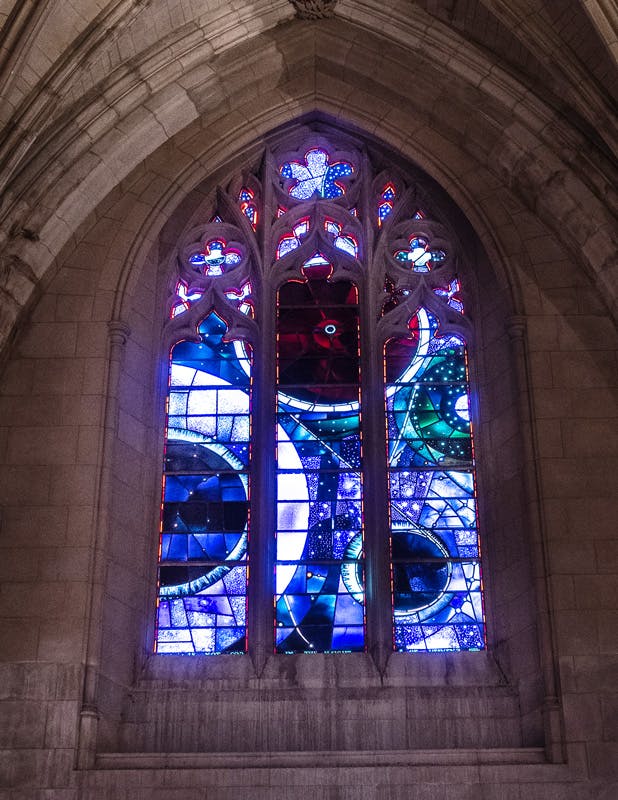
Figure 2: Celestial spheres and luminaries fill this window. The moon rock is in the middle of the dark red orb at the top. Across the bottom are words from Job 22:12: “Is not God in the heights of heaven?”
The rock’s presence shows how important the space race and the mission to the moon were to Americans.
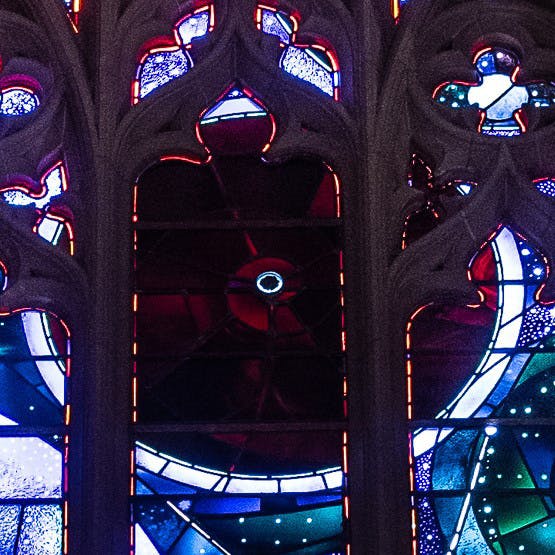
Figure 3: Detail of the moon rock.
It is not surprising that this is enshrined at the National Cathedral; this period of space exploration was a time in American history steeped in the Bible. The crew of Apollo 8 read from Genesis 1 as they orbited Earth. Buzz Aldrin took communion in the Apollo 11 lunar module as it rested on the moon’s surface. And the King James Bible went to the moon with Apollo 14 astronaut Ed Mitchell.
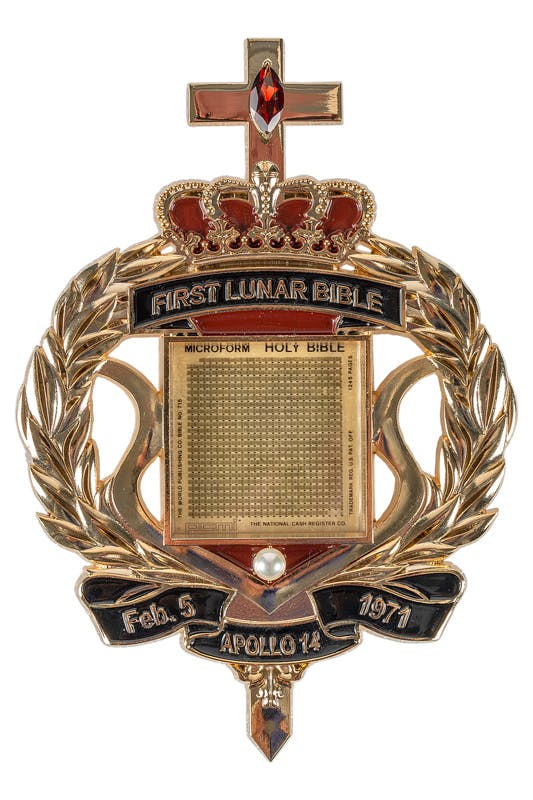
Figure 4: A copy of the Lunar Bible, part of our permanent exhibits. To discover more stories about the Bible’s impact on the space race and science, visit our current exhibit Scripture and Science: Our Universe, Ourselves, Our Place before it closes in January.
These stories are preserved at the National Cathedral, but you can explore them more deeply at Museum of the Bible through artifacts and exhibits, such as our display on the “Bible and Space” on the Impact of the Bible Floor.
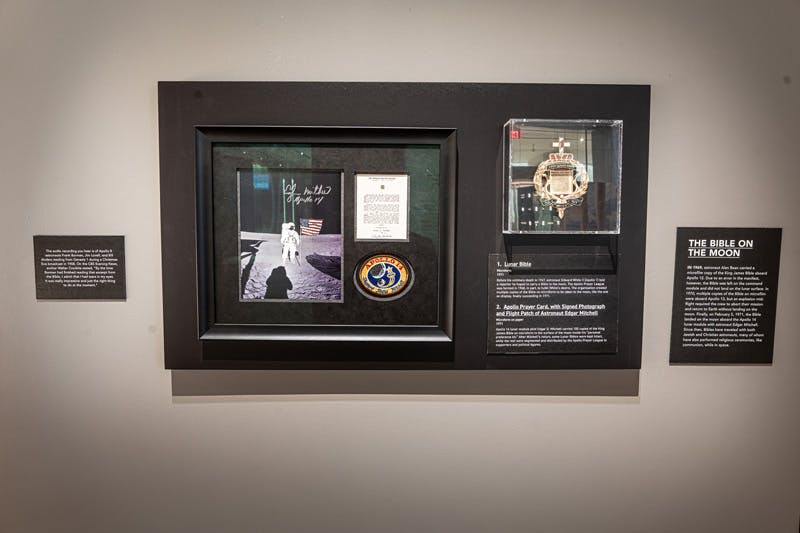
Figure 5: The Bible on the Moon area of the Bible and Space exhibit, featuring the Lunar Bible and the Apollo Prayer Card with astronaut Edgar Mitchell's signed photograph and flight patch.
Other stories and figures found in the National Cathedral can be explored in the same way at the museum. Statues of George Washington sit in the cathedral and on its grounds, just as some of Washington’s writings concerning the Bible and American life are exhibited at the museum. An exhibit on the Bible’s impact on “Stage and Film” or on “Pop Culture” at the museum perfectly complements the bust of Darth Vader sculpted among the gargoyles and grotesques on the cathedral’s northwest tower. The examples that could be produced are seemingly infinite.
The Bible is on display at the cathedral and on exhibit at Museum of the Bible. When you plan your next trip to DC, make sure to see them both.
By Jared Wolfe, Editorial Manager
*This column was formerly called “Beyond the Walls.” You can read other articles in this column under the Impact section of Museum of the Bible Magazine.
